For most, the SEO climb can seem like an impossible task without effective backlinks, which are often referred to as one of the most valuable tools for improving your website's rankings. But not all backlinks are created equal. Some backlinks carry more SEO “juice” than others, and it all boils down to; whether a backlink is no-follow or do-follow…
What is a No-Follow Backlink?
No-follow backlinks are a special type of link that usually informs search engines that the link's SEO properties or “link equity” should not be passed forward from one website to another, usually sponsored content, advertisements, and user-generated content like comments or forums. This is achieved through an HTML code in the link; rel=”nofollow”. In simpler words; a virtual stop sign for search engines. Which is the opposite of a do-follow link which passes on SEO power and helps the linked page rank higher in search results. Basically, Google is saying “you can link to this page, however don’t regard it as a vote of confidence.”

The Purpose of No-Follow Backlinks
No-follow links were introduced by Google in 2005 with the efforts of curbing spam tactics to build backlinks; websites often had a lot of low-quality, irrelevant backlinks in hopes of increasing their visibility.
Over the years, no-follow links have taken extremely important positions due to their transparency, clearly signaling to a search engine what should and what should not be focused on or influence ranking. As well as their ability to prevent manipulation; there can be no direct ranking manipulation, since no-follow links don’t pass authority!
You’ll mainly see no-follow links included in paid ads, forum discussions, social media handles, and blog comments. Classifying these links as no-follow helps search engines separate organic links from paid ones.

Why No-Follow Links Still Matter
“Why should I bother with no-follow links if they do not influence my SEO ranking?” Well, in addition to all their non-SEO related benefits, no-follow links can have significant value for your SEO strategy.
Referral Traffic
No-follow links have the power to generate referral traffic to your site. When someone clicks on a link in a blog post they’re reading, all they care about is reading the content on the other side, not whether Google is using it to pass PageRank or not. So, if you offered a no-follow link to a reputable site, you may be able to generate thousands of new visitors.
Building Authority
By including no-follow links and a named reference to your brand, it could be enough to increase your brand visibility and credibility. It is especially powerful through bigger publishers and in some cases, just one no-follow link can help make your content go viral.
A Well-Rounded Backlink Portfolio
no-follow links are a normal part of the internet, and part of a balanced, natural backlink profile. If all your links were do-follow then it could look suspicious. Somewhere between 5-20% no-follow links is reasonably acceptable and suggests a healthy backlink portfolio.
When to Use No-Follow Links
Don’t be afraid to use no-follow links. Yes, standard links will pass Google’s PageRank and increase your chances of ranking higher in search engines. However, that doesn’t mean no-follow links are obsolete. No-follow links can have some influence on rankings, and are valuable for increasing visibility and generating referral traffic!
A great way to use no-follow links is to increase traffic towards your best onsite content; as soon as people start discovering your work they’ll generate traffic to it, and could even build standard links of their own. Furthermore, if you host paid links or ads on your site, try to ensure they’re no-follow links; depending on your overall strategy, you could add a no-follow tag to all external links.
Best Practices
As we mentioned previously, no-follow links are needed for a balanced, natural backlink profile which will help you. Meaning that some of your do-follow links will need to be no-follow. If you’re keeping up with the best practices for content management and SEO then you’ll end up with the right balance of links naturally. If not, then you’re more than welcome to amend the balance yourself!
Finally, don’t stress if some of your links are no-follow by default; blog comments, forums, or certain types of press releases are usually marked as no-follow. Again, this isn’t a bad thing because while they might not transfer that “SEO juice” that you’re looking for, they help you get traffic, boost your brand’s online presence, and contribute to a steady, organic-looking link profile.
Looking for help with developing a diverse link building technique? Our experts can help you cook up a specific strategy and enhance the SEO of your site. Book a free consultation with us today!






















.png)



.svg)




